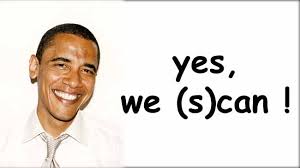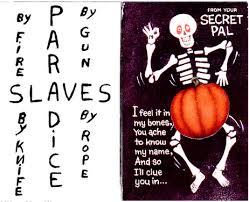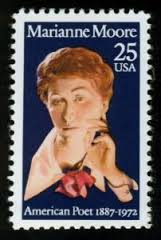Also I do not believe that Z had used one symbol for two letters either.
Once again… you do understand that Z did in fact use one symbol for two letters in the 408, right? Not that I actually believe the Celebrity Cipher is a Z communication. I don’t.
I still think that "OBJECTIVE FROG PERSONA" – though it doesn’t ‘fit’ still makes (a bit) more sense than:
STEWARDS TRANSITION DIARIES
EMBALMED MELANOMATA VILLAIN
THWARTED HORSESHOES PURPOSE
Or "FILMSETS," whatever that is supposed to mean.
I just don’t – CANNOT – see Zodiac, or anyone else throwing a bunch of nonsense words together, and then enciphering them. Maybe it’s just me. I don’t see the point, and it seems unlikely, IMO.
-glurk
——————————–
I don’t believe in monsters.
Or "FILMSETS," whatever that is supposed to mean.
Well, sets of film of course. Duh. We all know Z was a movie buff.
As I said..thousands of nonsense variations – one of them possibly better than those I came up with, so far.
QT
*ZODIACHRONOLOGY*
COMPLETE DECRYPTION TOOL
Based on a homophone or monoalphabetic substitution cipher, the following file delivers a – complete – decryption tool for the celebrity cipher.
Some preconditions:
– the tool is based on a huuuge dictionary, so some words may not be familiar or even simply be wrong (advantage is that we’ve considered all words available)
– at least one word is not readable due to the stamp, it therefore is replaced by ‘…’
– the Excel list function was not capable to put the complete decryption process into one row, therefore I had to create two rows
– Most important: Aside from the output of the tool, there is no (!) other solution possible (based on English language). Therefore all possibilities are technically correct. This doesn’t mean they make sense, however one of them should be the correct one. Other solutions are only possible if there is a different language, encryption method or if names had been used.
– Names, e.g. such of places, have not been considered.
– Words of the cipher have been ordered as A, B, C,.. etc.
– Some modifications do affect the rest of the cipher, some don’t (due to cipher structure)
– cipher structure was fully considered
– ‘Wild cards are written as a "_"
– If there are more word structures possible, they are separated by a "/" (this is the case with the 2- and 4-letter-words)
– the tool doesn’t consider the availability or non-availability of the 4-letter words, yet
– better do not try to understand the formulas behind it…the cipher structure was strictly followed according to the cipher structure (see picture)
HOW TO USE THE TOOL:
1. Choose the C word in one of the two rows
2. Choose the B and the D word (the lists in the background change depending on which C word you have chosen)
3. Choose the EF combination of 2-letter-words
Don’t forget to re-choose B, D and EF if you have changed the C word. Otherwise you’ll work with wrong lists in the background. Other C words (except names) do not work! This is either due to lack of B or D or 2-letter words or due to the cipher’s structure.
Now you can try out all (!) technical solutions for the celebrity cipher. Let’s find the right one.
DECRYPTION TOOL:
CIPHER STRUCTURE:
*ZODIACHRONOLOGY*
Also I do not believe that Z had used one symbol for two letters either.
Once again… you do understand that Z did in fact use one symbol for two letters in the 408, right? Not that I actually believe the Celebrity Cipher is a Z communication. I don’t.
In fact he did..however those symbols looked similar to each other, e.g. two triangles. This is why I believe he had made an error when encrypting it, just my opinion.
QT
*ZODIACHRONOLOGY*
In fact he did..however those symbols looked similar to each other, e.g. two triangles. This is why I believe he had made an error when encrypting it, just my opinion.
QT
The "transcription error" hypothesis is further supported by the fact that if you correct the errors, the homophone cycles improve.
Source: http://zodiackillerciphers.com/408/key.html#4
Note the symbol assignments for plaintext letters "I", "O", "S" and "T". When we make the corrections, the cycle patterns are also fixed.
In fact he did..however those symbols looked similar to each other, e.g. two triangles. This is why I believe he had made an error when encrypting it, just my opinion.
QTThe "transcription error" hypothesis is further supported by the fact that if you correct the errors, the homophone cycles improve.
Source: http://zodiackillerciphers.com/408/key.html#4
Note the symbol assignments for plaintext letters "I", "O", "S" and "T". When we make the corrections, the cycle patterns are also fixed.
*ZODIACHRONOLOGY*
I found an incidence of Marianne Moore appearing with Apollo 11 (and, coincidentally, Ayn Rand), here: Space Is the Place: The Lives and Times of Sun Ra. Moore, along with Ayn Rand, were asked to reflect upon the occasion of Apollo 11 for a July issue of Esquire, apparently.
Also of possible interest is that Moore was an objectivist.
Given Jack Parson’s (kind of the father of modern-day rocket science) association with the occult and the comics industry and the space industry, I think it interesting that Ayn Rand was selected to witness the Apollo 11 launch and to document the achievement, providing her thoughts for posterity. In light of Rand’s own personal contribution(s) to the Church of Satan (i.e. providing them their motto, "Do what thou wilt shall be the whole of the law"), it perhaps goes beyond interesting. And this from the Ayn Rand Institute’s web page…
POV: APOLLO 11
by Ayn Rand | September 1969 | The Voice of Reason
SHARE
ARI’s Point of View on the Value of Science and Technology
For Ayn Rand, laissez-faire capitalism is desirable above all else because under it the individual is free to think and create. It is this fact that explains the astonishing technological progress and rapid rise in living standards in late nineteenth-, early twentieth-century America, when the nation approached laissez-faire.
In Rand’s day, a culture-wide celebration of technological progress was non-existent. In July 1969, Rand attended the launch of Apollo 11 to the moon. In her essay “Apollo 11,” she draws out the timeless philosophic meaning of that mission, and discusses the cultural reactions to it. “What we had seen, in naked essentials,” she writes, “was the concretized abstraction of man’s greatness.” For Rand, the launch and the ensuing moonwalk represented man at his best. This scientific and technological achievement was a spectacular illustration of the efficacy of man’s rational mind.
“A great event,” however, “is like an explosion that blasts off pretenses and brings the hidden out to the surface, be it diamonds or muck.” The diamonds were to be found in the public’s positive reaction to the launch. The muck came in the reaction from many intellectuals, whose critiques reveal the malignant nature of their ideas about man, morality and reason. (This essay can be found in The Voice of Reason.)
It is these malignant ideas of mysticism and self-sacrifice that ARI opposes in the name of reason, which, when left free, can and does achieve the scientifically and technologically wondrous.
Below is a brief excerpt from Rand’s much longer essay "Apollo 11." The excerpt, published in the Los Angeles Times on the thirtieth anniversary of the launch, offers an indication of Rand’s perspective.
The Voice of Reason
BUY THE BOOK
Moon Launch Was Man’s Shining Hour
by Ayn Rand
"No matter what discomforts and expenses you had to bear to come here," said a NASA guide to a group of guests at the conclusion of a tour of the Space Center on Cape Kennedy on July 15, 1969, "there will be seven minutes tomorrow morning that will make you feel it was worth it."
It was.
[The launch] began with a large patch of bright yellow-orange flame shooting sideways from under the base of the rocket. It looked like a normal kind of flame, and I felt an instant’s shock of anxiety, as if this were a building on fire. In the next instant the flame and the rocket were hidden by such a sweep of dark red fire that the anxiety vanished. This was not part of any normal experience and could not be integrated with anything.
The dark red fire parted into two gigantic wings, as if a hydrant were shooting streams of fire outward and up, toward the zenith, and between the two wings, against a pitch-black sky, the rocket rose slowly, so slowly that it seemed to hang still in the air, a pale cylinder with a blinding oval of white light at the bottom, like an upturned candle with its flame directed at the Earth.
Then I became aware that this was happening in total silence, because I heard the cries of birds winging frantically away from the flames. The rocket was rising faster, slanting a little, its tense white flame leaving a long, thin spiral of bluish smoke behind it. It had risen into the open blue sky, and the dark red fire had turned into enormous billows of brown smoke, when the sound reached us. It was a long, violent crack, not a rolling sound, but specifically a cracking, grinding sound, as if space were breaking apart, but it seemed irrelevant and unimportant, because it was a sound from the past and the rocket was long since speeding safely out of its reach — though it was strange to realize that only a few seconds had passed.
I found myself waving to the rocket involuntarily, I heard people applauding and joined them, grasping our common motive; it was impossible to watch passively, one had to express, by some physical action, a feeling that was not triumph, but more the feeling that that white object’s unobstructed streak of motion was the only thing that mattered in the universe.
What we had seen, in naked essentials — but in reality, not in a work of art — was the concretized abstraction of man’s greatness.
The fundamental significance of Apollo 11’s triumph is not political; it is philosophical; specifically, moral-epistemological.
The meaning of the sight lay in the fact that when those dark red wings of fire flared open, one knew that one was not looking at a normal occurrence but at a cataclysm which, if unleashed by nature, would have wiped man out of existence — and one knew also that this cataclysm was planned, unleashed and controlled by man, that this unimaginable power was ruled by his power and, obediently serving his purpose, was making way for a slender, rising craft.
One knew that this spectacle was not the product of inanimate nature, like some aurora borealis, or of chance, or of luck, that it was unmistakably human — with "human," for once, meaning grandeur — that a purpose and a long, sustained, disciplined effort had gone to achieve this series of moments, and that man was succeeding, succeeding, succeeding! For once, if only for seven minutes, the worst among those who saw it had to feel — not "How small is man by the side of the Grand Canyon!" — but "How great is man and how safe is nature when he conquers it!"
That we had seen a demonstration of man at his best, no one could doubt — this was the cause of the event’s attraction and of the stunned numbed state in which it left us. And no one could doubt that we had seen an achievement of man in his capacity as a rational being — an achievement of reason, of logic, of mathematics, of total dedication to the absolutism of reality.
Frustration is the leitmotif in the lives of most men, particularly today — the frustration of inarticulate desires, with no knowledge of the means to achieve them. In the sight and hearing of a crumbling world, Apollo 11 enacted the story of an audacious purpose, its execution, its triumph and the means that achieved it — the story and the demonstration of man’s highest potential.
Was glancing back over unconfirmed letters for a write up I plan to make. Noticed the writer of the post card wrote "cypher" instead of cipher. Also noticed that this post card was addressed to the Vallejo Times Herald (Harold). Interesting thing, when the Zodiac wrote the papers (3 part letter) in July of 1969, the Vallejo Times Herald was the only paper to receive a letter with the word cipher spelled "cyipher". Its as though he started to write "cypher" but then finished it out as it should have been spelled. Not sure if anyone had made this comparison before but thought it worth mentioning if it hadn’t.
Soze
"cypher" would appear to have originally been a British spelling variant. However, British usage now favours "cipher". Therefore, "cypher" is not the British spelling variant of "cipher" in the same way as "colour" vs "color" etc. Thus the usual stipulations of treating national variations do not apply (Wikipedia:Manual_of_Style#Usage_and_spelling)
https://en.m.wikipedia.org/wiki/Wikipedia:WikiProject_
When considering the actual ciphertext of the Celebrity Cipher, I think that some care needs to be taken when interpreting the symbol that is disappearing under the stamp. The usual images of the cipher are generally washed out, so that it is no longer possible to see the stamp as a whole which, of course, includes a perforated border around its edge. This can be reconstructed through graphically overlaying an image of the stamp, so:
The usual interpretation of the letter to the immediate left of the stamp is an ‘M’.
However, in the above reconstruction I had, in fact, replaced the (part) ‘M’ with the upturned ‘V’, or Lambda, as can be seen when the stamp is removed again:
In the first image, it is noticeable that the perforations of the stamp edge may actually be creating only the illusion of a form closely resembling the nearby ‘M’.
I would, therefore, want to argue for the possibility that this might be otherwise.
[EDIT: addition of text to second image]
“This isn’t right! It’s not even wrong!”—Wolfgang Pauli (1900–1958)
..
*ZODIACHRONOLOGY*








